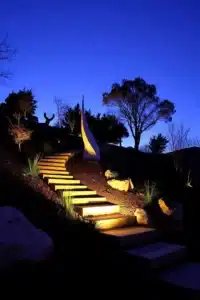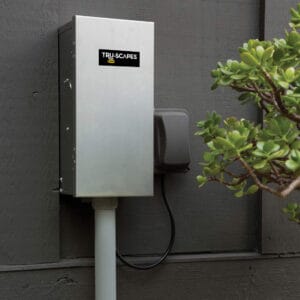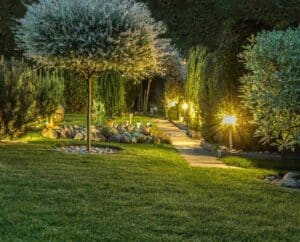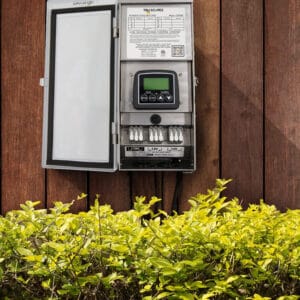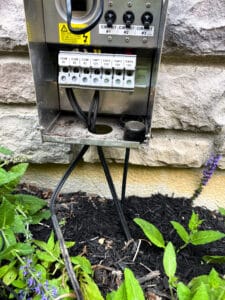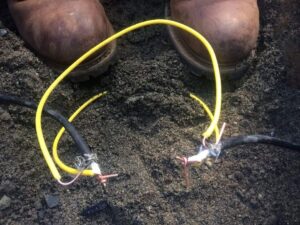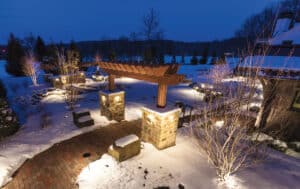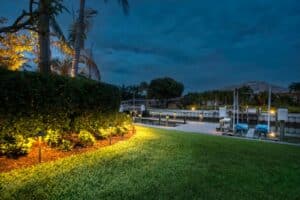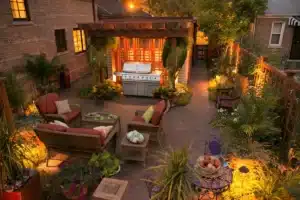Ever walked through your neighborhood at dusk and noticed how some yards just seem to glow with personality? It’s not magic—it’s smart landscape lighting design. The right lights can turn your outdoor space into a reflection of who you are, whether you lean toward sleek modern vibes or cozy rustic charm. In this guide, you’ll learn how to craft a landscape lighting design that showcases your personal style while making your home’s exterior pop. From picking fixtures to placing them just right, I’ve got you covered with practical tips to light up your yard—and your creativity.

Why Landscape Lighting Design Matters
Your yard isn’t just grass and plants—it’s an extension of your home. A well-planned landscape lighting design does more than brighten dark corners. It highlights what you love about your space, sets the mood, and even boosts curb appeal. According to the home builders’ take on lighting trends, outdoor lighting is one of the top features buyers look for in a home. But beyond resale value, it’s about creating a space that feels uniquely you. So, how do you get started?
Step 1: Define Your Personal Style
Before you buy a single light, take a moment to think about what “style” means to you. Are you drawn to clean lines and minimalism, or do you prefer warm, vintage vibes? Your landscape lighting design should echo the same aesthetic as your indoor decor—or at least complement it. Need help? Check out our tips on choosing the best lights for your yard to match your vibe.
- Modern Enthusiasts: Go for sleek, low-profile fixtures in black or stainless steel. Think geometric shapes and subtle, cool-toned light.
- Traditionalists: Opt for lantern-style lights or ornate designs in bronze or copper. Warm white bulbs can add that cozy, timeless feel.
- Eclectic Souls: Mix it up! Combine bold colors, quirky shapes, or even string lights for a playful, one-of-a-kind look.
Not sure where to start? Stroll through your home. Notice the colors, textures, and shapes you’ve already chosen. Then, bring that energy outside.
Step 2: Map Out Your Space
Grab a notepad—or your phone—and sketch your yard. No need for fancy drafting skills; a rough outline works fine. Mark key features: trees, pathways, patios, or that flower bed you spent all spring perfecting. These are your focal points, and they’ll guide where your lights go.
Ask yourself:
- What do I want to show off? (Maybe that stunning oak tree or your new deck.)
- Where do I need light for safety? (Steps, walkways, or uneven ground.)
- What’s my vibe? (Soft and subtle or bold and dramatic?)
This map is your blueprint. It keeps your landscape lighting design intentional, not haphazard. For inspiration on spotlighting those focal points, try our guide to highlighting trees with uplighting.
Step 3: Choose the Right Fixtures
Here’s where the fun begins—picking lights that match your style and your yard’s needs. At Tru-Scapes, we specialize in hardscape and landscape lighting that’s built to last and look good doing it. Here are some options to consider, and you can explore our lighting products for more:
- Path Lights: Perfect for lining walkways or garden beds. Choose slim stakes for a modern twist or classic lanterns for a traditional touch.
- Spotlights: Ideal for highlighting trees, statues, or architectural details. Adjustable ones let you play with angles and intensity.
- Deck Lights: These tuck into railings or steps, adding a subtle glow that screams sophistication. See our guide to deck lighting for more ideas.
Pro Tip: Stick to one or two fixture styles for a cohesive look. Too many designs can make your yard feel cluttered instead of curated.
| Fixture Type | Best For | Style Fit |
| Path Lights | Walkways, borders | Modern, Traditional |
| Spotlights | Trees, focal points | Modern, Eclectic |
| Deck Lights | Patios, stairs | Modern, Traditional |
Step 4: Play with Light and Shadow
Lighting isn’t just about brightness—it’s about balance. Too much light washes out your yard; too little leaves it dull. Here’s how to nail it:
- Uplighting: Point spotlights upward to accentuate trees or walls. It’s dramatic and works for bold personalities.
- Downlighting: Mount lights in trees or on eaves to mimic moonlight. It’s soft, natural, and great for a relaxed vibe.
- Silhouetting: Place lights behind an object (like a shrub) to create a striking outline. Perfect for artsy, eclectic yards.
Experiment with placement. Step outside at night with a flashlight to test angles before installing anything permanent. You’ll be amazed at how a small tweak can change the whole feel.
Step 5: Pick the Perfect Bulbs
The bulb you choose sets the tone—literally. Color temperature (measured in Kelvin) is key—learn more in our breakdown of understanding color temperature:
- Warm White (2700K–3000K): Cozy and inviting, ideal for traditional or rustic styles.
- Cool White (3500K–4500K): Crisp and modern, a go-to for sleek, contemporary designs.
Brightness matters too. For subtle accents, aim for lower lumens (100–200). For standout features, go brighter (400–600 lumens). Tru-Scapes offers LED options that save energy without skimping on style—because who doesn’t love a win-win? The U.S. Department of Energy has great energy-saving outdoor lighting tips if you’re curious.
Step 6: Plan for Practicality
A stunning landscape lighting design isn’t just about looks—it has to work for your life. Middle-aged homeowners like you often juggle busy schedules, so keep it simple:
- Use timers or smart controls to automate your lights. (We don’t mess with motion sensors, but a good timer does the trick.)
- Group lights into zones (e.g., front yard vs. backyard) for easy control.
- Stick to durable, weatherproof fixtures—Tru-Scapes lights are made to handle U.S. seasons, from snowy winters to humid summers. Check out our tips for keeping your lights in top shape.
Safety’s a bonus here. Well-lit paths and steps mean fewer stumbles, whether you’re carrying groceries or hosting a barbecue.
Step 7: Add Your Personal Flair
This is where your style shines. Love hosting? String some café lights over the patio for a festive touch. Obsessed with symmetry? Line your driveway with evenly spaced path lights. Got a favorite color? Paint your fixtures (if they’re metal) or choose bulbs with a hint of tint.
One homeowner I know turned her backyard into a stargazing haven with low-level lights that mimic constellations. It’s quirky, personal, and totally her. What’s your signature move?
Common Questions About Landscape Lighting Design
How much does a good design cost?
It depends on your yard’s size and the fixtures you pick. A basic setup might run $500–$1,000, while a custom job could hit $2,000 or more. Start small—add a few key pieces and build from there.
Can I install it myself?
Absolutely! Low-voltage systems (like ours at Tru-Scapes) are DIY-friendly. Just follow the instructions and double-check your wiring. If you’re unsure, a pro can handle it in a day. Our guide on installing low-voltage lighting walks you through it.
How do I maintain it?
Wipe fixtures clean every few months and check for loose connections. LEDs last years, so you won’t be swapping bulbs often.
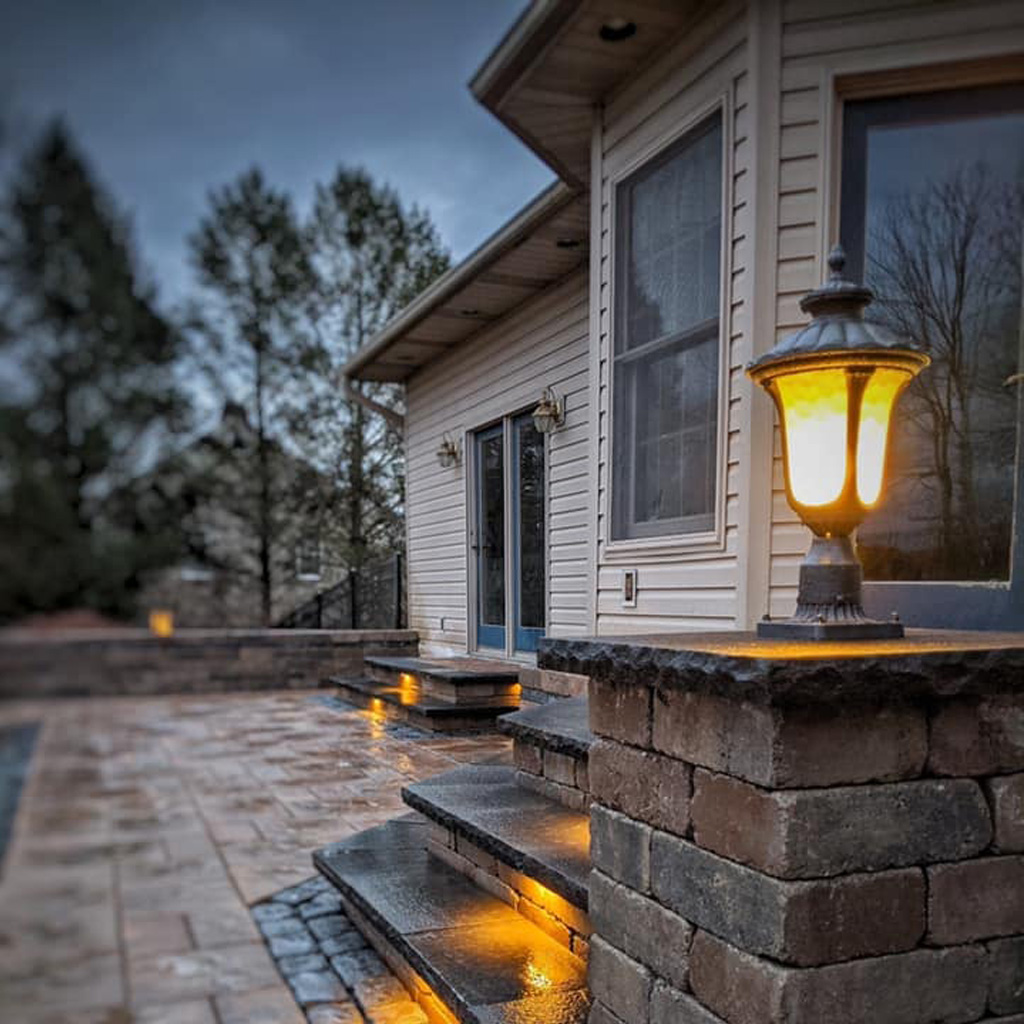
Bringing It All Together
Planning a landscape lighting design that reflects your style is simpler than it sounds. Start by pinning down your aesthetic, mapping your space, and choosing fixtures that fit. Play with light placement, pick bulbs that set the mood, and add those personal touches that make it yours. The result? A yard that’s not just functional but a true extension of you. For more insights, the Lighting Research Center offers expert outdoor lighting research worth a peek.
Ready to light up your outdoor space? Grab a notepad, head outside, and start sketching. Share your ideas in the comments—I’d love to hear how you’re making your yard your own. Or, check out Tru-Scapes fixtures to kick things off. Your style deserves to shine.

